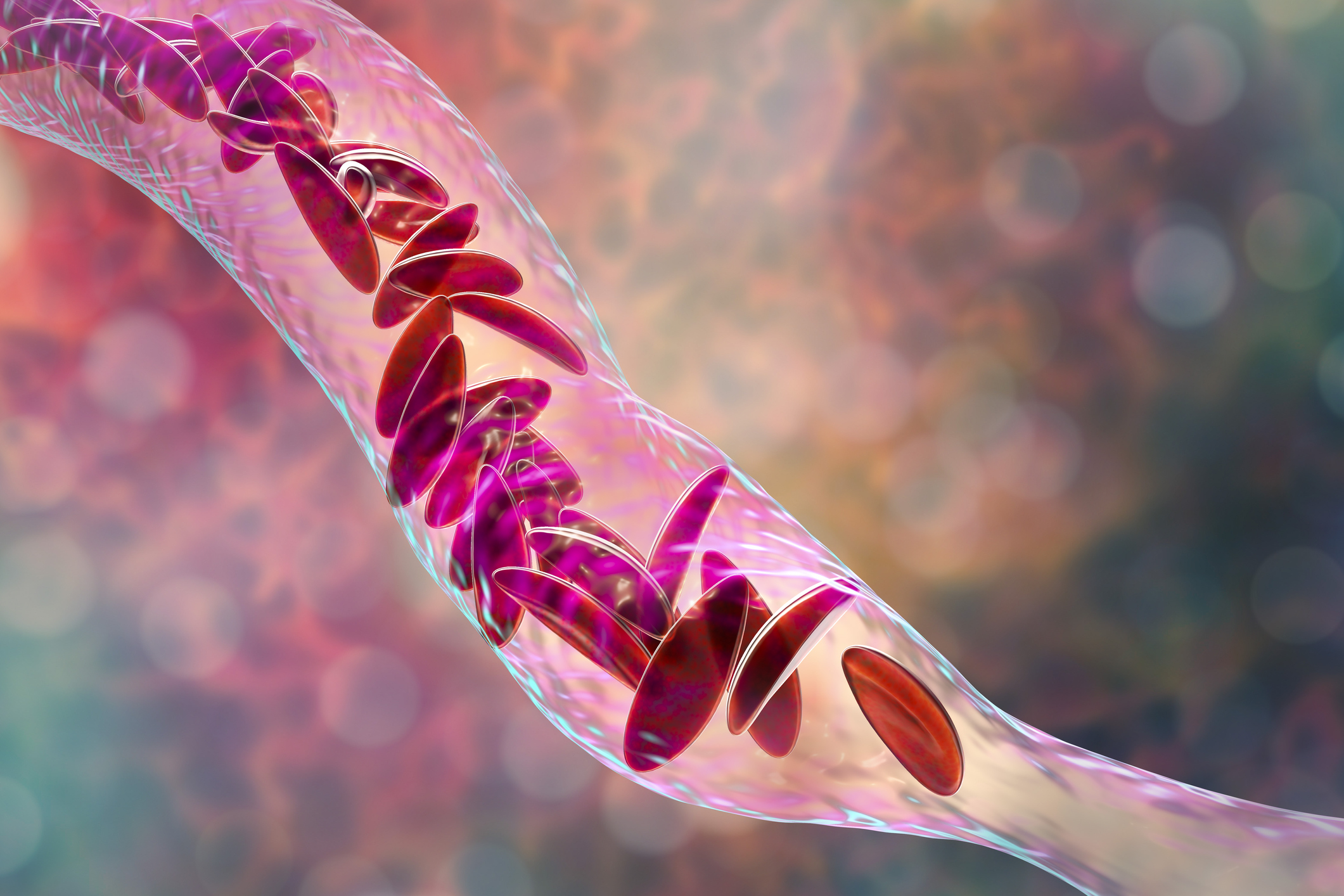What is sickle cell disease?
Sickle cell disease is an inherited disorder of the red blood cells. It involves a defect in the hemoglobin protein which is found inside of the red blood cells. Hemoglobin is responsible for bringing oxygen from the lungs to the rest of the body. Normal red blood cells are shaped like a doughnut, they’re round and flexible which allows them to travel freely through the blood vessels. In patients with sickle cell disease, the red blood cells are rigid and shaped like a sickle or banana which prevents free travel through the blood vessels, instead there is a tendency for the red blood cells to clump together and get stuck. This blockage prevents oxygen from getting to where it needs to go which can lead to episodes of severe pain and tissue and organ damage.
What are the biggest challenges you see for sickle cell patients?
Because sickle cell disease is a chronic lifelong condition, patients and families face many physical and psychosocial challenges throughout their lives. Depending on the severity of the disease, these challenges could include frequent disruptions in their daily lives. We have patients that find it difficult to maintain a full time job or to attend school on a regular basis. These patients are at a high risk for stroke and other cardiac and pulmonary problems as well as being high risk for infection. There is also the very real challenge that comes with learning to live with the stigma of having sickle cell disease, especially when it comes to pain management. Many people simply don’t understand the disease and the extent of the pain that is involved with it. Often times our patients face being mislabeled drug seekers during their most vulnerable moments.
What is the treatment plan for patients with sickle cell disease?
As the state’s primary referral site for sickle cell patients, Rutgers Cancer Institute is able to treat both pediatric and adult patients using well proven therapies and cutting edge clinical trials. Currently the only cure for sickle cell disease is a bone marrow transplant. However, there are effective therapies that can minimize symptoms and prolong life. Hydroxyurea is currently the standard treatment for sickle cell disease, however there have recently been newly FDA approved therapies which have shown promising results in managing the symptoms of sickle cell disease.
How important is the role of an Oncology Nurse Navigator for sickle cell patients?
The primary focus of a nurse navigator for Sickle Cell patients is to support patients and their families by identifying barriers that might prevent them from staying on track with their treatment. We also educate the patient and family regarding the disease and the treatment process. The nurse navigator collaborates with the patient’s medical team, psychosocial counselors, and service organizations to help guide the patient through available resources. In pediatrics, the nurse navigator also helps prepare the adolescent patient for transition to adult healthcare when the time comes.
For more information on Sickle Cell Disease, visit: https://www.cinj.org/education/sickle-cell-disease




